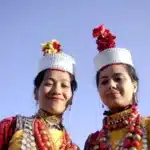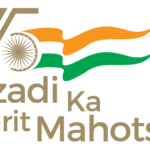The Independence Day of Bangladesh, celebrated annually on March 26, stands as a testament to the nation’s resilience and the indomitable spirit that led to its liberation from Pakistan in 1971. This national holiday is marked by parades, speeches, fairs, and ceremonial events, all paying homage to the historic declaration of independence by Sheikh Mujibur Rahman. Bangladesh Independence Day is celebrated on 26 March every year to commemorate the declaration of independence from Pakistan on this day in 1971. The day is a national holiday in Bangladesh and is celebrated with great enthusiasm and patriotism. The road to Bangladesh’s independence was marked by a long and difficult struggle, which began with the partition of India in 1947. At that time, the region that is now Bangladesh was part of Pakistan, which was created as a separate country for Muslims. However, the people of Bangladesh, who were primarily Bengali-speaking and predominantly Muslim, faced political and economic marginalization from the ruling elite in West Pakistan.
History of Bangladesh Independence Day
The roots of Bangladesh’s struggle for independence trace back to the Partition of India in 1947 when Pakistan emerged as an independent state. What is now known as Bangladesh was initially referred to as East Bengal and later became East Pakistan. In 1970, President Yahya Khan, representing the minority West Pakistan, resisted the transfer of power to Sheikh Mujibur Rahman, who won the general elections. This power struggle ignited the flame of independence, as East Pakistan demanded autonomy.
In 1970, a general election was held in Pakistan, and the Awami League, led by Sheikh Mujibur Rahman, won a landslide victory in East Pakistan. However, the ruling elite in West Pakistan refused to recognize the results, and a brutal crackdown was launched against the people of East Pakistan. On 25 March 1971, the Pakistani army began a campaign of violence and terror against the people of East Pakistan, which led to the declaration of independence by Sheikh Mujibur Rahman on 26 March 1971. The Bangladesh Liberation War then ensued, which lasted for nine months and led to the eventual defeat of the Pakistani army.
On 16 December 1971, the Pakistani army surrendered to the joint forces of the Indian Army and the Mukti Bahini, the Bangladeshi guerrilla force and Bangladesh emerged as an independent country. The Independence Day celebrations in Bangladesh are marked by parades, speeches, and flag-hoisting ceremonies. The national flag is hoisted in all public and private buildings, and people wear traditional clothes and paint their faces with the colors of the flag. The day is also marked by cultural programs, concerts, and other festivities. Overall, Bangladesh Independence Day is an important day for the people of Bangladesh, as it commemorates their struggle for independence and the sacrifices made by their ancestors. It is a day of national pride and unity, and an opportunity for the people of Bangladesh to come together to celebrate their identity and culture.
The night of March 25, 1971, witnessed the gruesome “Operation Searchlight” by the Pakistan Army, a military operation leading to the indiscriminate killing of approximately 3 million Bengalis—a dark chapter in history remembered as the Bengali genocide. Undeterred by adversity, Sheikh Mujibur Rahman declared the independence of East Pakistan on March 26, 1971. What ensued was a nine-month-long liberation war, known as the “Bangladesh War of Independence,” culminating in Pakistan’s surrender on December 16, 1971.
India’s involvement in Bangladesh’s Independence
India played a significant role in the independence of Bangladesh from Pakistan in 1971. The independence struggle in Bangladesh began in March 1971 when the Pakistan Army launched a crackdown on the Bengali population, which they perceived as a threat to their rule. The crackdown resulted in widespread violence and human rights abuses. India provided shelter and support to millions of Bengali refugees who had fled to India to escape the violence. The Indian government also provided military training and weapons to the Bengali freedom fighters, who were organized under the leadership of the Awami League and the Mukti Bahini.
India formally intervened in the conflict on 3 December 1971, when the Pakistan Air Force launched a pre-emptive strike on Indian airfields. In response, the Indian Air Force launched a counter-attack and destroyed the majority of the Pakistani Air Force’s planes. This was followed by a ground offensive by the Indian Army, which resulted in the surrender of the Pakistani Army on 16 December 1971, and the establishment of Bangladesh as an independent country. Manekshaw, popularly known as ‘Sam Bahadur’, was the Chief of the Army Staff of the Indian Army during the Indo-Pakistani War of 1971. India’s intervention in the conflict was a significant factor in the eventual outcome, and the Indian government was widely praised for its role in the independence of Bangladesh. The conflict resulted in the deaths of hundreds of thousands of people and the displacement of millions, but it ultimately led to the creation of an independent Bangladesh.
Bangladesh Independence Day Significance
- Inherent Right to Freedom: Independence Day reaffirms the universal right to self-governance.
- Conflict Resolution: It serves as a reminder that conflicts can be resolved peacefully without resorting to war.
- Peaceful Resolution with Pakistan: The eventual peace reached between Bangladesh and Pakistan underscores the significance of diplomacy over conflict.
Bangladesh Independence Day Celebrations
In Bangladesh, Independence Day is marked by grand celebrations. Parades, speeches, fairs, and ceremonial events honour the sacrifices made during the war. A symbolic thirty-one-gun salute heralds the morning of this historic day. The Day can be celebrated in following ways.
- Join the Festivities: Participate in celebrations, whether in Bangladesh or virtually.
- Learn More About Bangladesh: Expand your knowledge about Bangladesh—its history, culture, languages, and religion.
- Post on social media: Share the joy by posting the Bangladesh national flag with the hashtag #independencedaybangladesh.
Independence Day of Bangladesh Timeline
- 1971: Independence Day Bangladesh gains independence from Pakistan on March 26.
- 1971: War of Independence The Bangladesh War of Independence concludes after nine months.
- 1977: Independence Day Award The annual Independence Day Award is instituted.
- 2021: Golden Jubilee Bangladesh commemorates the golden jubilee of independence from Pakistan.
5 Important Facts About Bangladesh
- Huge Population: Ranking eighth globally, Bangladesh has over 160 million inhabitants.
- Six Seasons: Unlike four typical seasons, Bangladesh experiences six, including Grisma (summer) and Basanta (spring).
- Royal Bengal Tiger: The national animal, the Royal Bengal Tiger, has a roar audible from three kilometers away.
- No Smiling Culture: Smiling is viewed cautiously, considered a sign of immaturity in Bangladesh.
- World’s Largest Mangrove Forest: Sundarbans National Park is the world’s largest mangrove forest, located in Bangladesh.
Independence Day of Bangladesh FAQs
Bengali is the official language, with other indigenous languages spoken.
The United Nations classifies Bangladesh as a least developed country.
Independence Day of Bangladesh Dates
- 2024: March 26 (Tuesday)
- 2025: March 26 (Wednesday)
- 2026: March 26 (Thursday)
- 2027: March 26 (Friday)
- 2028: March 26 (Sunday)







